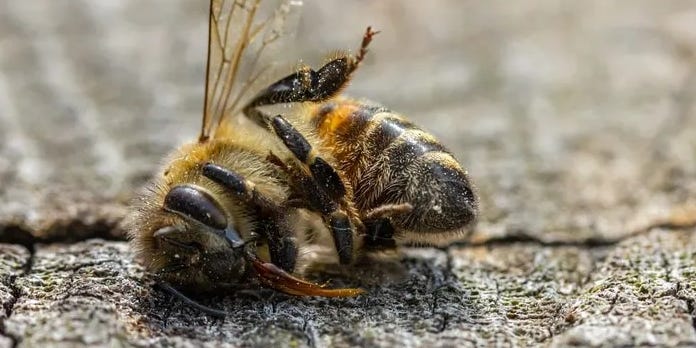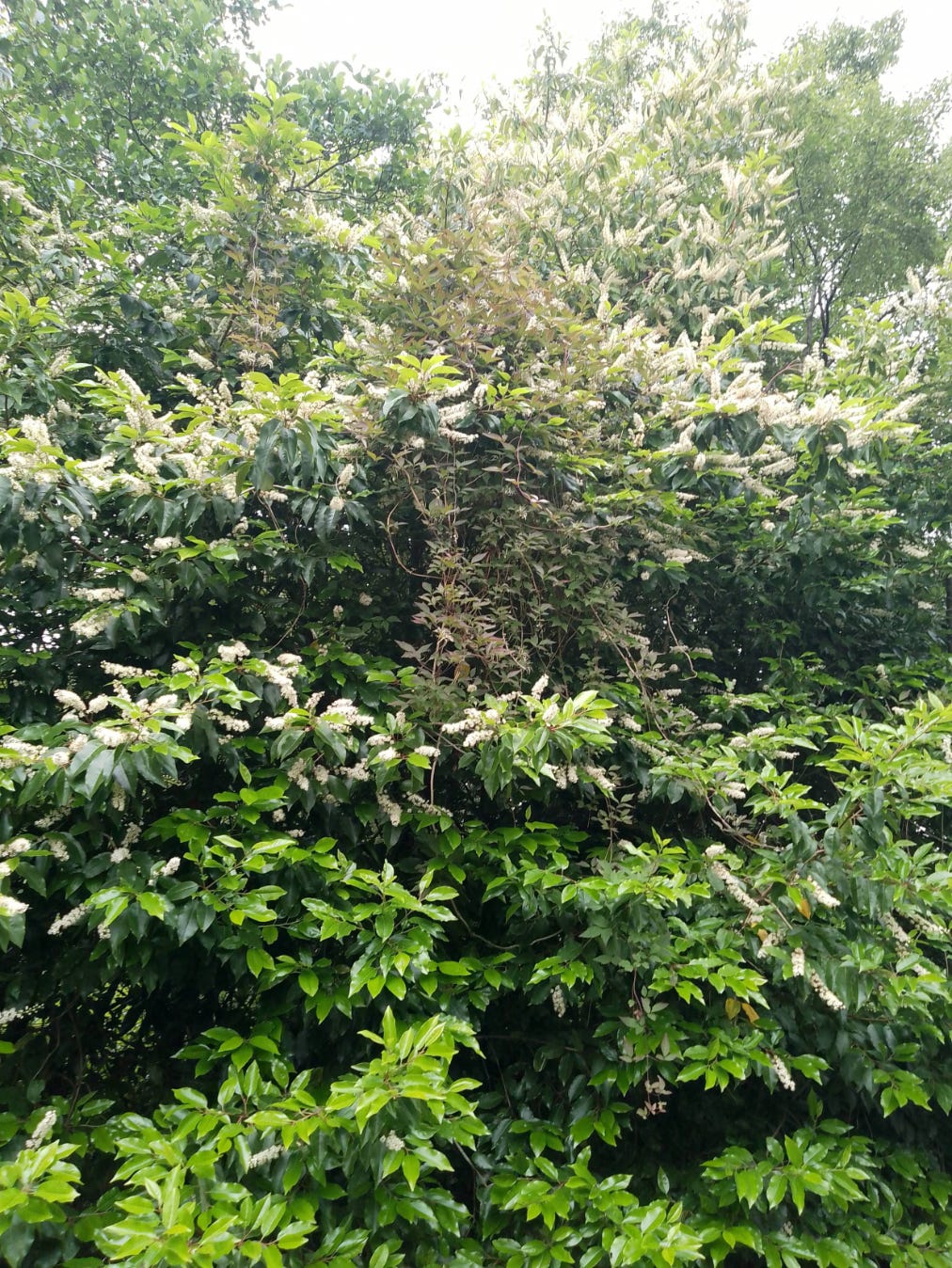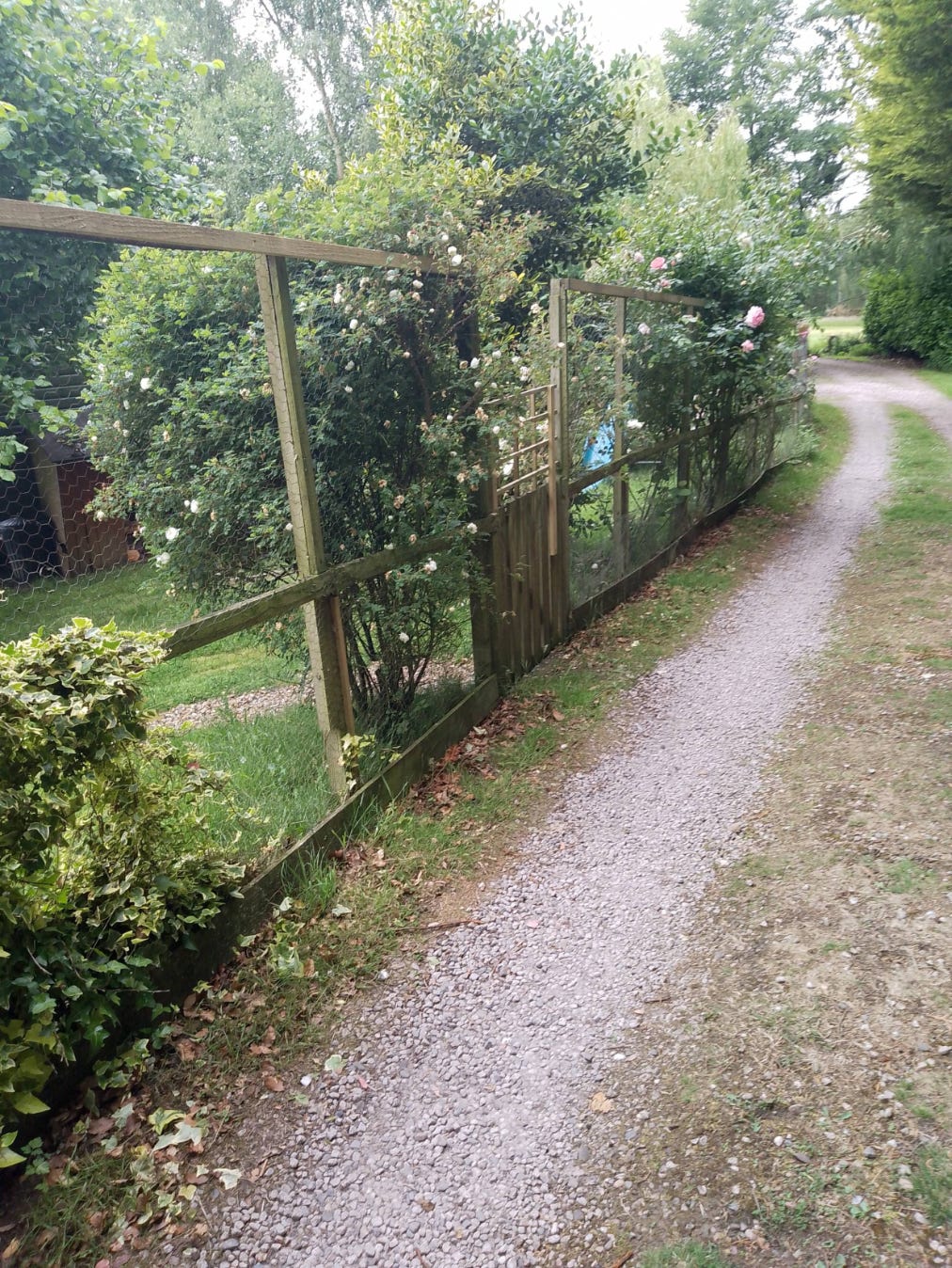The bee was dying.
I discovered her on the ledge outside our bedroom window when I opened the curtains. She was hunched into herself, motionless, faintly respiring. She obviously hadn’t got much time left.
(Something like this - not my photograph)
I sped to the kitchen and, in a small tumbler, knocked up a measured solution of two parts of granulated sugar and one part of lukewarm water. Then I carried the tumbler and a teaspoon back to the bedroom.
While I held the spoon under her head, she began to take tiny sips on her little, black darting proboscis. Within a few minutes, she had come to life and was breathing normally. Not long after, she flew away.
She had been starving to death.
There’s a lot of it about at this time of year, when beekeepers mutter darkly about “the June gap”. In theory, this is the time when the Spring flowers have withered and the Summer flowers have yet to bloom. In the absence of pollen and nectar, the bees peg out. All the authorities recommend feeding colonies with a solution of sugar and water to support them through the June gap.
Nobody questions the existence of this phenomenon. It is an established fact in beekeeping lore.
I, however, don’t get it. To my mind it is as much a mystery as the isolation starvation which killed my colonies in February, when they huddled together in the hives with their heads in empty cells of honeycomb while spreads of honey lay nearby. Like my own poor bees, the bee on the window sill was expiring in the midst of abundance.
Our south-facing herb garden at the back of the house was maybe three seconds’ flight from the spot where she was breathing her last. In that sunny patch, masses of roses are in full flower on the walls. A block of lavender, four feet by two, is reaching its peak. Countless yellow poppies are blooming.
In the opposite direction but not more than 10 yards away, a waterfall of Portuguese laurel (prunis lusitanica) with its small fragrant white flowers in racemes is tumbling down the face of a high hedge. Facing that hedge on the west-facing wall of our living-room is a spread of honeysuckle 15’ high x 25’ long.
(The torrent of laurel)
With a notebook in my hand, I walked around that small area of our garden with my wife, while she called out the names of the flowers she could see.
I wrote down Canterbury Bells (Campanula medium); Scabious; Geraniums; Alpine Avums (Geum Montana); Heuchera; Astilbe; Salvia Rose Queen; Alium; Ladysmantle (Alchemilla mollis); Rock Rose; Mexican fleabane (rigeron karvinskianus); Cosmos (Cosmos atrosanguineus); Petunias; Bellflowers; Thrift and roses galore, galore, galore.
Other parts of the garden are running wild with borage and buddleia. Meanwhile, the hedgerows beside our road are crammed with bramble (blackberry) flowers, cow parsley and campion and the extensive woods beside our land are thrumming with honeysuckle.
(Roses galore down our drive)
Call that a gap? Looks more like a banquet to me. What do they want? Silver service?
It is true that some of these decorative plants and flowers offer little or no nectar for the bees to forage upon. At the same time, other flowers are awkwardly shaped for their probosces. Even so, you’d think there would be enough out there for them to get by.
Why don’t they? We know they are not stupid.
I suspect, as so often, that the answer is down to human hands. The bees would manage just fine if nobody messed around with them.
Spring in the UK usually produces a massive glut of nectar and pollen from willow, hawthorn and fruit trees. To that abundance is added the flow of forage from oilseed rape fields. By mid-May, the bees in the hive or nest will have made a surplus of honey. It will almost be running out of the frames.
But they need it. That’s why they have made it. This is the period of non-stop, intensive activity for the colony, with the queen laying up to 1500 eggs a day and new queens beginning to appear, forcing the colony to contemplate dividing and swarming. If 30,000 of them take flight and swarm, they will remove every morsel of honey they can carry.
So that period of early summer is precisely the time when the beekeeper fires up his smoker, pulls his veil over his face and marches up the hives with a hive-tool in his hand to remove as much honey as he can take in the first harvest of the year.
All the beekeeping Facebook pages will now be full of boasts about the buckets of honey that have been extracted and photographs of prize-winning jars.
At the same time, those pages will also be thundering warnings about “the June gap” and the threat of starvation to colonies.
Isn’t it curious that we don’t hear the sound of a penny dropping at this point?
I put a question on the Facebook pages of Beekeeping for Beginners UK. I asked, “Why do bees starve in the June gap when gardens are full of flowers?”
Among the answers that came whizzing back were:
“Leave spring honey on , then no problem, only take from summer crop , it’s that simple”
and
“They will only starve if too much spring honey was taken off.”
and
“Maybe if you left spring honey in the hive it wouldn't happen”
and
“Cause beeks’ have stolen all their honey!”
That’s all you need to know about the honeybee that was pegging out on my windowsill.
She wouldn’t have been dying if the plundering of her own natural resources had not left her too weak to feed on the plentiful supplies all around her.
Bit of a metaphor for our times on this plane?





Notwithstanding everything else you said, quite correctly, there is still the possibility that the bee on your windowsill should have been outside where she would not have starved. The June Gap is an old folks tale invented by the beekeepers who took all the honey). Here in NW England, same as you described in your post, there’s always plenty in June; the lime blossom is currently out and this year it will probably boost the honey crop.
You take what you need
And you leave the rest
But they should never
Have taken the very best